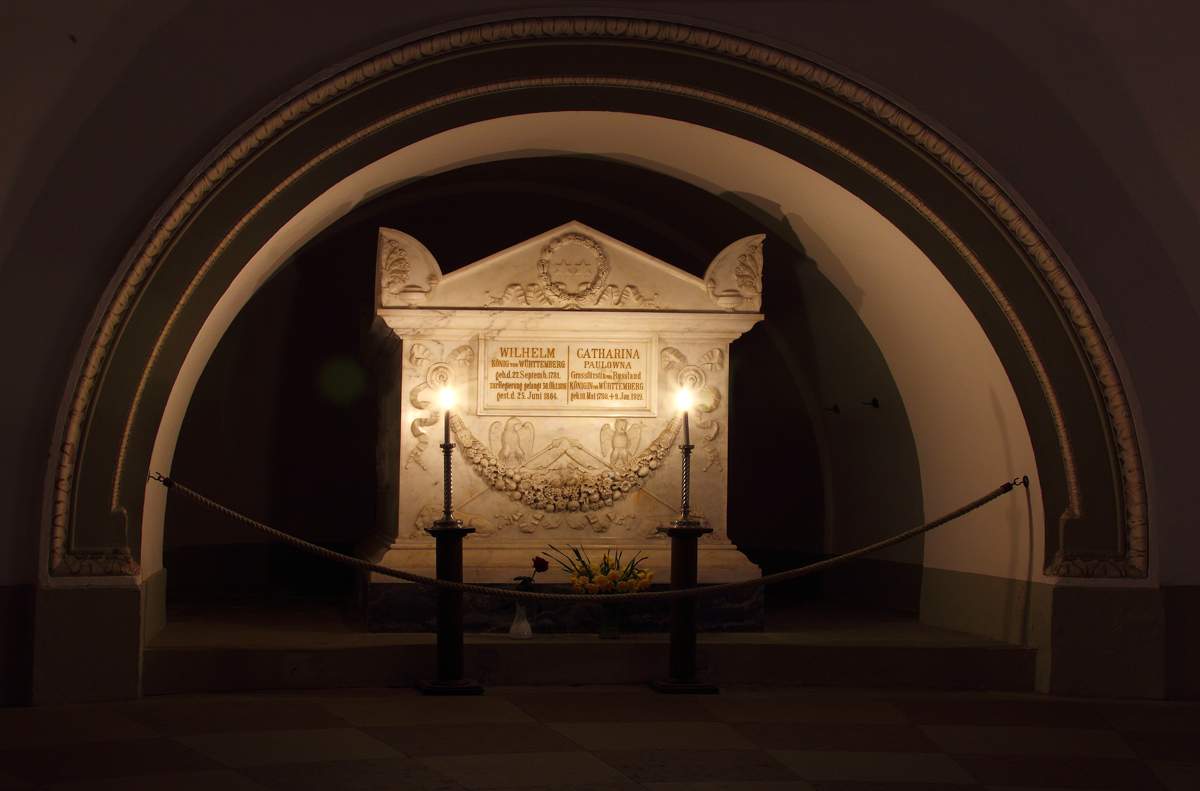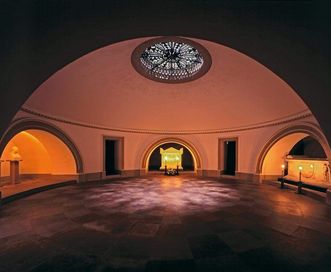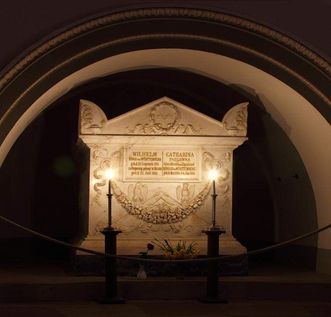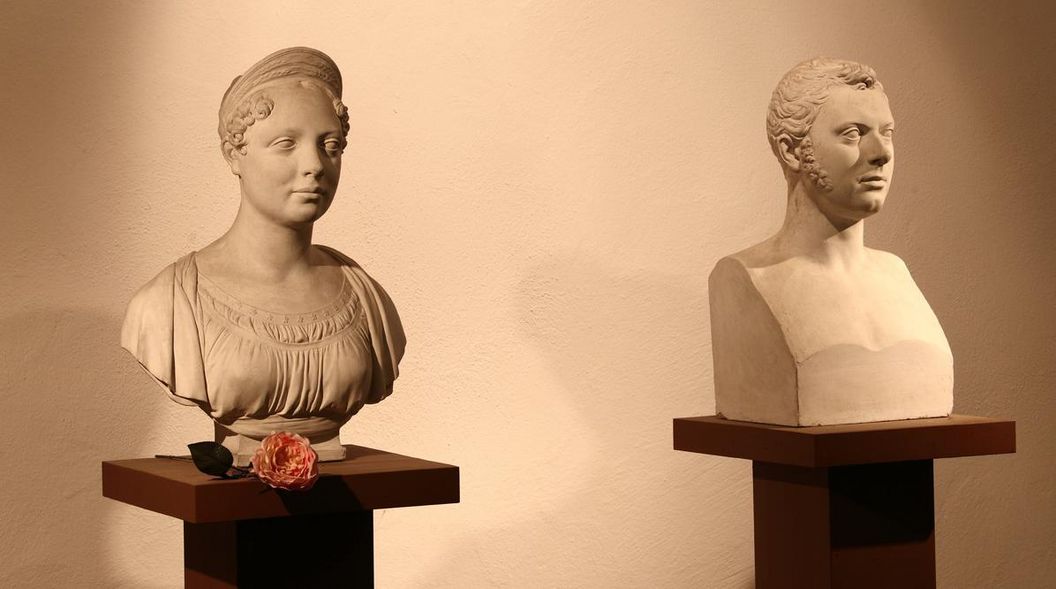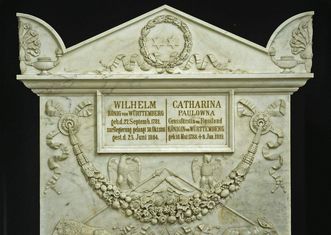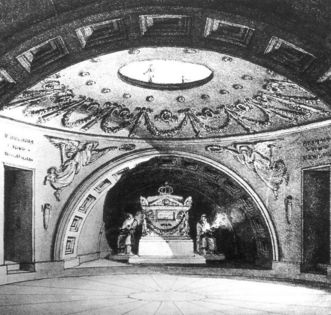ATMOSPHERIC INDIRECT LIGHTING
The crypt is located directly below the chapel and can be reached via a narrow, steep spiral staircase. In contrast to the bright chapel, the crypt is quite low and dark. Originally, light entered the room through the opaion, or skylight. This circular opening at the highest point of the low cupola is barred by an ornate cast-iron grate from Wasseralfingen. Song and prayer from the chapel could reach the crypt via the opaion, thereby including the departed in the liturgy.



